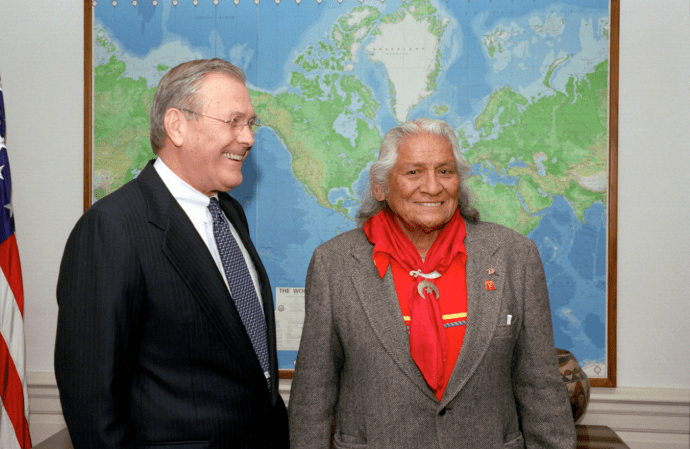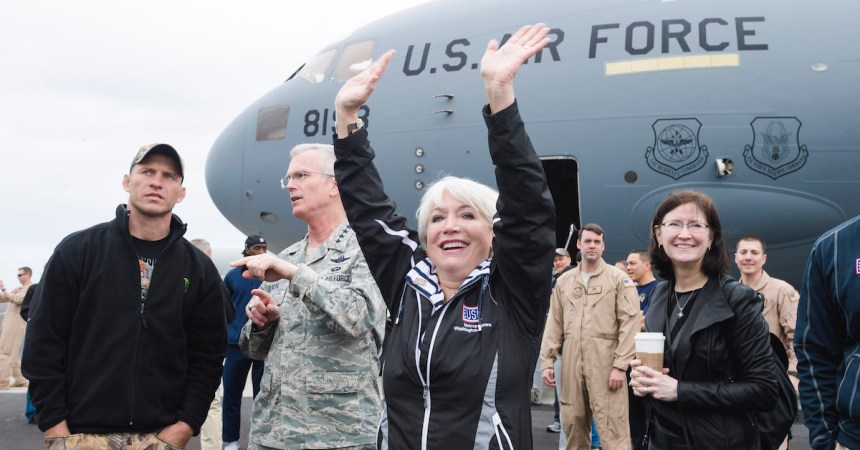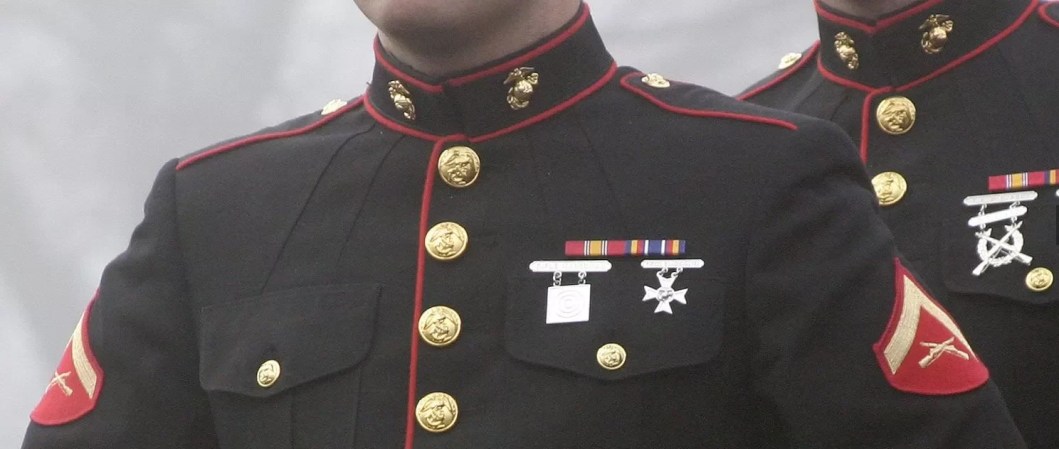My mother’s friend Akemi was beautiful. Gentle, with a lightness in her presence and the way she moved. She had a quiet home and taught me how to use chopsticks. She was Okinawan and married a soldier that my father served with.
Lydia lived two doors down from my family. She was German and had married an American soldier, too. I assume that if you didn’t know her she would come off as gruff and difficult but I loved her as if she were a blood relative. She smoked cigarettes and yelled at the huge Rottweiler whose head bounced off the underside of her dining room table.
Anna married my team sergeant when he was an upstart infantryman stationed in Panama. She spoke Spanish around us and I could usually understand the scolding that she gave to her husband and kids. She put up with our young, dumb soldier antics and let us drink too many beers in her living room while we watched the pay-per-view fight where Tyson bit Holyfield‘s ear off.
These women are just a small fraction of the hundreds of thousands – perhaps millions – of women, and increasingly men, who have married America’s uniformed representatives stationed around the world; brave women who relinquished their cultures, families and pasts in order to embark on new adventures as part of the US military family. Their stories continue today but there are fewer of them, with younger sailors, airmen and Marines marrying spouses originally from Europe and Asia, but we must assume at a much lower rate.
Why assume? Because no one keeps records – not the Defense or State departments – that might tack down how many foreign born people have married American service members over the past century, though we can assume it to be a significant number. In the 1980s, in one New York City neighborhood alone, there were more than 100 British-born war brides who gathered in fellowship as a group known as the Flushing Crumpets. However impossible it may be to put hard numbers on the population of foreign-born military spouses over the years, there can be no dispute that there are fewer international spouses marrying men and women who wear America’s military uniforms than during the height of the Cold War.
Fayetteville, North Carolina, is my adopted hometown. It lies just outside of Fort Bragg – the Army’s most populated installation and was long one of the main debarkation points for newly arrived, foreign-born military spouses. The United States is a nation of immigrants, but there is something extra-special about Fort Bragg, and the dozens of communities across the nation that sidle up next to the posts and bases. Or at least there has been for most of the post World War II era. Fort Bragg in particular is the home base for the Army’s airborne and special operations forces, which draws soldiers back to the post from the corners of the planet like a tractor beam, and with them spouses from a rainbow of nations – Vietnam, Germany, Korea, Panama and Thailand.
Even with its diverse military population of more than 50,000 soldiers, sailors, Airmen and Marines, Fort Bragg isn’t dealing with a rush of foreign spouses in need of help navigating a transition to American military spousehood. According to Stacy Williams, the post’s Multicultural Readiness Programs coordinator, even before the restrictions mandated by COVID-19, the post had no more than 2-3 foreign spouses attend bi-monthly International Spouse Orientation courses, and only one person was currently scheduled to attend the course that resumed from its COVID-mandated pause in January 2021.
Why does this matter? Maybe it doesn’t but I think who our service members choose as spouses tells us quite a bit about how the US government arrays its military influence around the globe.
General Mark Milley, the Chairman of the Joint Chiefs of Staff, made minor headlines Dec. 3, 2020, after suggesting that he would rather not have the U.S. military permanently station large numbers of service members and families in partner nations in Europe and Asia. But he also balked at having large numbers of units on rotational deployments as has increasingly been DoD policy in places like Poland and the Baltic nations, to counter Russian aggression, and the Pacific Rim in Guam and Australia.
Peacetime, strategic deployments of the US military, whether permanent stationing or rotational assignments, are more the experiences of a Cold War military and with the international upheaval of the post-Berlin Wall collapse, and increasingly less of a reflection of current American foreign policy. Milley’s comments, then, are less hints of a new American deployment strategy than they are a recommitment of the past two decades of geopolitical gamesmanship.
Economists use leading and lagging indicators as a kind of weathervane to gauge the health and direction of an economic system. One of these lagging indicators of how US military policy has affected international diplomacy might come from the changing nature of the international make up of the communities that surround military installations Stateside. The demographic shifts around US posts and bases over the past three decades might tell us as much about where America has decided to spend its diplomatic capital as well as how many soldiers, sailors, airmen and Marines are stationed for three years in places like Okinawa and Ramstein.
The American government, up until the post-World War II era, had exhibited an incredible bit of self-restraint in terms of expansionism. Other than short stints to claim territory during the Spanish American war, American administrations were generally loathe to commit the American military outside of its borders. President Woodrow Wilson famously dragged his feet during World War I and made every effort to keep America out of the conflict in Europe. The bitter taste of the First World War in Congress’ mouth led to the enactment of neutrality acts, which President Franklin D. Roosevelt found ways to work around before America’s involvement in World War II was assured by the attack at Pearl Harbor. After the Axis Powers were defeated, though, America’s isolationist past was exactly that – a thing of the past.
At the height of the Cold War in the middle of the 20th Century, there were more than 400,000 Americans in uniform stationed across Europe, from Greenland to the tip of Italy, which has drawn down to about 75,000 as of early 2020. In the Pacific Theater, there are still nearly 78,000 service members, mainly split between South Korea and Japan. In the decades following the end of World War II and the signing of the Armistice that ended the Korean War, more than 70,000 service members were station in South Korea alone, where soldiers and Airmen were, like their compatriots in Germany, England and Italy, often free to spend their free time in local communities, often in the company of local young women.
Engagements, and eventually marriage, between service members in post-World War II Europe and Asia had become enough of a concern for the military, and the American government as a whole, that the US Congress passed the American War Brides Act in late 1945 that allowed for the immigration to the United States of more than 100,000 military-connected newly-weds and fiancés outside of the strict immigration quotas emplaned after the war.
But with the retrenchment of American foreign policy, the ability for service members to have direct, often very direct, contact with foreigners while deployed has been curtailed. The challenge to validating military marriages as a lagging indicator of US foreign policy, though, is that no one keeps records on how many German and Korean and Japanese and Italian brides have left their homes on the uniformed arms of soldiers, sailors and Airmen over the years.
For nearly all of the 20th Century, the US military assumed a dominant position along the rim of the South China Sea in the Philippines with thousands of American stationed at Clark Naval Base Subic Bay and then Clark Air Base near the Philippine capital of Manila. Following the eruption of Mount Pinatubo in 1991, the US Air Force made a hasty retreat and the Navy followed suit by sailing from Subic Bay in 1992 when an agreement for stationing US Naval forces fell through. With China making inroads in the South Pacific, the US government made a recent play to return the Navy to Subic Bay, which was nixed by Philippine president Rodrigo Duterte in July 2020.
In 1999, American forces similarly withdrew from a nearly century-long mission in Panama to serve as a regional presence and to guard over the Panama Canal. When President Jimmy Carter signed the 1977 agreement to relinquish control of the canal to the Panamanian government, he also severed a pipeline that saw Panamanian brides join their American husbands, who were part of a 10,000-strong American military force in Central America, from stationing at Fort Clayton to new homes at places like Fort Hood, Fort Lewis and Washington, DC.
The reduction in permanent stationing of the US military across the globe, combined with a lessening of American political and economic dominance, has diluted the international make up of many military communities here in the States. There are parallels to the ways that service members were deployed to South East Asia during the Vietnam War and how soldiers and Marines have been dispatched to the post-9/11 Middle East and Southwest Asia. Almost anyone in Vietnam and Iraq could be considered a threat. Shorter tours with little to no interaction with the communities that they patrolled and monitored meant that young American men and women have had almost no chance to woo potential romantic partners. Low-intensity conflict zones with daily guerrilla attacks aren’t typical hookup hotbeds for young Americans dressed head to toe in their finest Kevlar body armor.
And I don’t think that we have even considered the vast cultural differences that removed invading American forces from the dating pools in Kandahar and Anbar and Mogadishu and what that means for the cultural makeup of military-connected communities. Since the Departments of Defense and State don’t keep specific records on who service members marry, it becomes a challenge to know how many may have married natives of Iraq, Afghanistan and the other countries following American warriors back from combat deployments. But anecdotes show that there are probably just a handful, including an Army Civil Affairs officer who was felled in combat shortly after settling his Iraqi wife in her new hometown near Fort Bragg, NC.
The vast cultural differences that exist between Americans and the residents of the communities in the Middle East, Central Asia and Africa that those Americans have occupied in the past two decades can’t account for the majority of the reduction in foreign-born spouses immigrating to the States. Economics, and America’s status as a dominant force on the world stage, may have just as big a role to play.
Elke Steele, a German who married an American soldier stationed near Stuttgart in 1990, now works for a match-making website that helps to connect Germans living near Wiesbaden with Americans and other non-German residents. She agrees that there are fewer fraulines marrying soldiers and Airmen, but suggests that it’s more than just a matter of fewer Americans being stationed in Europe.
Steele says that German women have “their own careers, a good lifestyle (with) free universal health care” and that they don’t want to leave their families and friends behind for the promise of a new life in America. Complicating matters, she says, are restrictions based on the threat of terrorism that keep GIs confined to their installations and the simple fact that “the dollar isn’t worth anything anymore.”
The promise of a better life in the States for German women isn’t so promising, Steele feels. But perhaps it is for women from Eastern Europe and Russia, women whom Steele feels are prized by young American men for being “more feminine and still believing that the woman stays at home raising the kids, while the man is the breadwinner of the family.”
Steele’s ground level appreciation for the shift in romantic partnering between American service members and foreign nationals holds true for Dr. Morton Ender, a sociology professor at the U.S. Military Academy at West Point. Ender notes that “German, Italian and British women don’t marry up anymore when they marry a soldier – unless they bag an officer” and that military officers generally take partners who are college educated, which shrinks the pool of potential war brides immigrants even further. Ender’s analysis of demographic data also suggests that currently many soldiers are already married or in serious, long-term relationships before they deploy.
America is asking its warriors to soldier in ways that they haven’t been asked to in the past – more one-year and shorter deployment, more unaccompanied deployments and missions to countries and cultures that are not welcoming of American soldiers on an individual and romantic level. And while the Biden administration has promised more robust foreign policy positions and a greater willingness to engage in diplomacy with partners and adversaries alike, there is no hint that that the US military will engage in a wholesale redeployment of its forces to Europe and Asia to counter the continuing belligerence from Russia and China.
The collapse of the Soviet Union in 1991 didn’t end the great powers competition for influence and resources, but it did crumble the need for the US government to maintain mini-Americas across the globe that served as way stations for young women, and increasingly young men, to immigrate to the States as a soldier’s spouse. As a nation of immigrants, it seems unlikely that the rich jumble of culture and language that collects on military installations and just outside the gates will completely wither away, but the high water mark of the Cold War’s long-term deployment is well faded and with it, the sounds and smells of the cultures of America’s 20th Century war brides.
Maybe it doesn’t matter if we have foreign-born spouses who add richness and texture to our military communities and beyond. But it makes me lament there are kids growing up today who might never have their own Akemis, Lydias and Annas who will help them to know the world is much more than strip malls and carbon-copy chain restaurants, and that our immigrants – many who come to the States on the arm of an American in dress uniform – are the people who continue to feed life into the American experience.

























